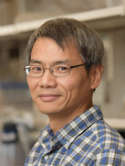The immune microenvironment and noantigen landscape of aggressive salivary gland carcinomas differ by subtype Journal Article
| Authors: | Linxweiler, M.; Kuo, F.; Katabi, N.; Lee, M.; Nadeem, Z.; Dalin, M. G.; Makarov, V.; Chowell, D.; Dogan, S.; Ganly, I.; Hakimi, A. A.; Wong, R. J.; Riaz, N.; Ho, A. L.; Chan, T. A.; Morris, L. G. T. |
| Article Title: | The immune microenvironment and noantigen landscape of aggressive salivary gland carcinomas differ by subtype |
| Abstract: | Purpose: Salivary gland carcinomas (SGC) are rare, aggressive cancers with high rates of recurrence and distant metastasis. These factors, and a lack of active systemic therapies, contribute to poor clinical outcome. Response rates with immune checkpoint blockade have been low, although clinical data remain sparse. To improve the efficacy of therapies, a more comprehensive understanding of relevant molecular alterations andimmunologic processes is needed. Experimental Design: To characterize the immune microenvironment and neoantigen landscape of SGCs, we performed RNA sequencing (RNA-seq) in 76 tumors representing the three most lethal histologies: adenoid cystic carcinoma (ACC), myoepithelial carcinoma (MECA), and salivary duct carcinoma (SDC). We analyzed transcriptomic profiles, tumor-infiltrating immune cell populations, and measures of T-cell activation/dysfunction. In 37 cases also undergoing exome sequencing, we analyzed somatic mutations and neoantigens. Results: SDCs exhibited high levels of immune infiltration, with corresponding higher levels of T-cell dysfunction, and higher mutational load. In contrast, ACCs were characterized by an immune-excluded microenvironment, the presence of M2-polarized macrophages and myeloid-derived suppressor cells, and very low mutational load. MECAs were more heterogeneous, with both immune-low and immune-high phenotypes represented. Across all SGCs, levels of immune infiltration were associated with mutation- and fusion-derived neoantigens, and with aggressive clinical behavior. Conclusions: These findings provide new insights into the immune microenvironment and neoantigen landscape of SGCs, showing that mechanisms of immune escape appear to differ by histology. These data nominate potential immunologic vulnerabilities and may help guide the next steps of investigation in precision immunotherapy for these difficult-to-treat cancers. |
| Keywords: | survival; chemotherapy; expression; ctla-4 blockade; sensitivity; head; mutational landscape; nivolumab; cancer; pd-1 blockade |
| Journal Title: | Clinical Cancer Research |
| Volume: | 26 |
| Issue: | 12 |
| ISSN: | 1078-0432 |
| Publisher: | American Association for Cancer Research |
| Date Published: | 2020-06-15 |
| Start Page: | 2859 |
| End Page: | 2870 |
| Language: | English |
| ACCESSION: | WOS:000541830300012 |
| DOI: | 10.1158/1078-0432.Ccr-19-3758 |
| PROVIDER: | wos |
| PUBMED: | 32060100 |
| PMCID: | PMC7918996 |
| Notes: | Article -- Source: Wos |
Altmetric
Citation Impact
BMJ Impact Analytics
MSK Authors
Related MSK Work


















